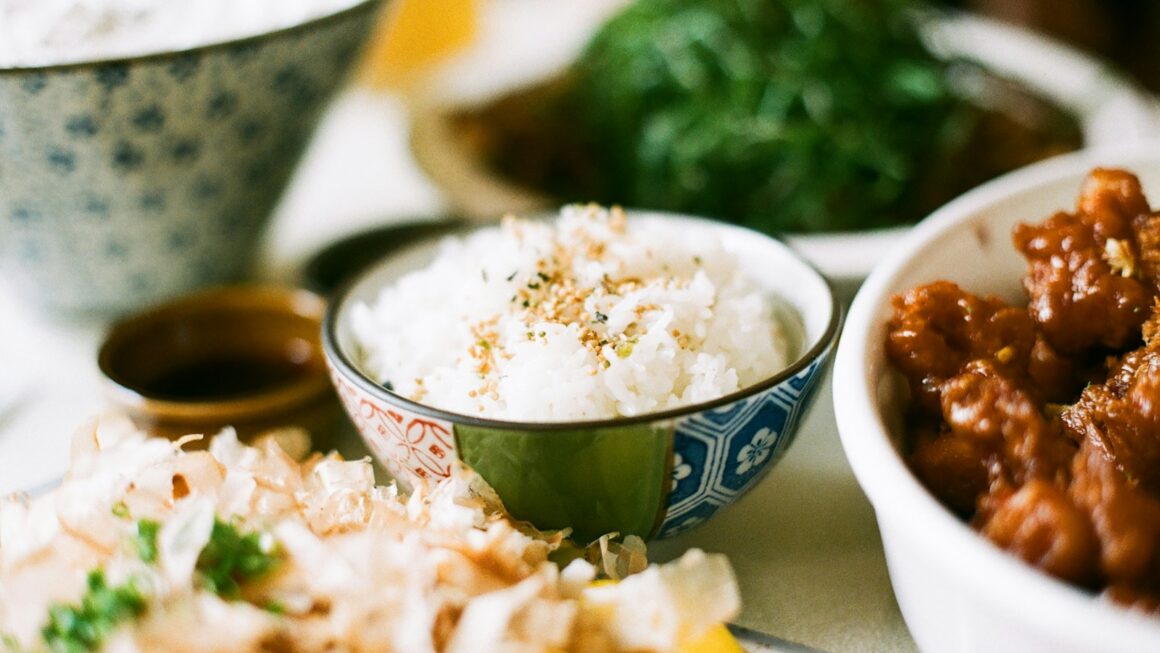So, you’re telling me that you are in possession of the magical Japanese rice cooker but do not know how to use it? How dare you? You are missing out real bad. Japanese rice cookers are an essential part of the Japanese diet, and whether or not you eat rice daily yourself, knowing how to make Japanese rice is an awesome cultural experience and skill to have. Why? Because look at it. I mean, just look at that Japanese rice cooker and its many buttons.
I’m from the Philippines, where rice is a staple food as well, but back home, our rice cookers had one lever-type thing that you push down to get your rice cooking, and that’s it – done! And maybe you like the convenience of having to press only one button to get your chore done, but rest assured, the buttons you see here are backed by top-notch technology to make sure you get the best-tasting rice ever.
I know that sounds crazy because rice is essentially tasteless. Honestly, it used to annoy me to hell when we were living in Cebu, and my Japanese husband would complain about the rice (though I’ve bought the most pricey kind) and say that it just doesn’t taste right. But I’ve lived in Japan for some time now, and when I travel back home and eat… I get it. I get it.
So here we go, let’s get to know your Japanese rice cooker. The one that we have at home is from a brand called Tiger – which is great. If you are someone who is still planning on getting a Japanese rice cooker, some of the brands you would want to look into are Tiger, Zojirushi, Panasonic, Sharp, and Toshiba, but Tiger and Zojirushi are definitely up there when talking about rice cookers.
I have the Tiger IH Rice Cooker Mini, and what I’m going to do is explain what all of these buttons do and then I’m going to tell you how I, actually, cook rice.
The Buttons on Your Japanese Rice Cooker
1. メニュー (Menyuu)
This button says menu is what it does is it lets you choose how you want your rice to be cooked. The choices are indicated in this panel here where you can also see the time. It depends on what kind of machine you have at home of course, but for this particular model, there are nine options you can choose from. I know – it’s crazy, right? Nine ways to cook rice, people.
So what are these options?
- エコ炊飯 (Eco-suihan): This is the Eco mode which would allow you save on electricity. How? I don’t know. Science. The downside, however, is that the finished product would be slightly harder than how most Japanese people would like it. If you’re not really accustomed to the taste yet, I doubt it would really make a difference on your perception. But if you want to know what all the fuss is about when it comes to Japanese rice, I wouldn’t recommend it as it wouldn’t deliver the exact quality Japanese people love.
- 白米(Hakumai): This means “White Rice” and is the option you would press for the standard way of cooking. This is the most commonly used mode and the one I would recommend.
- 極うま(Goku Uma): This literally means “very delicious”. It would take longer for your rice to cook, though.
- 早炊き (Haya taki): This mode is for ‘speedy’ cooking. Choose it when you’re in a hurry. However, expect your rice to be harder than usual.
- 炊き込み(Takikomi): Press this button if you are cooking Takikomi-gohan, a Japanese dish where rice is cooked with other ingredients.
- おこわ(Okowa): Okowa is another Japanese dish where rice is cooked with other ingredients. However, it is made with glutinous rice and is more sticky.
- おかゆ( Okayu): This mode allows you to cook porridge using your rice cooker. Be sure to add the right amount of water.
- 雑穀米(Zakkokumai): Choose this mode if you are cooking multigrain rice.
- 玄米( Genmai): This option is dedicated for cooking genmail which is brown rice.
- GABA 増量(GABA zouryou): GABA is a naturally occurring amino acid found in rice that has been all the hype in Japan in the recent years. This option means ‘increased GABA’ and you can choose it to have rice with higher nutritional value. There are also special GABA rice being sold in Japan.
2. 炊き飯 (Takimeshi)
After choosing the mode, press this button to start cooking your rice.
The kanji below it is also worth discussing. 無洗米(Musenmai): Did you know that in Japan you can buy special rice that does not need to be washed? Yes, you heard that right! If you bought the musenmai rice, just add the right amount of water, press this button and voila!
3. 保温 (Hoon)
This mode is to keep your rice warm. Once your rice is cooked, this option will automatically be turned on. If you don’t need your rice kept warm, then just press this button.
4. おこげ(Okoge)
This setting lets you prepare rice with a hard crust. A lot of Japanese may prefer this if they are cooking Takikomi Gohan.
5. 取消 (Torikeshi)
If you want to reset or cancel cooking, press this button.
6. 予約 (Youyaku)
Press this button if you want to preset cooking your rice at a later time. You can use the following two buttons to choose the time:
- 時 : Use to choose the time you want your rice to be cooked (cycles between 0-23)
- 分: press if you also want to specify the minute mark (example: 6:30)
You can also use the 時/分 buttons to change the time displayed on the panel’s clock.
In addition to displaying the current time, if your rice is about to be ready, this panel also shows the remaining number of minutes until it is cooked.
How To Cook Rice With Your Japanese Rice Cooker
Step 1: Add and rinse desired amount of rice.
Step 2: Add water based on the amount of rice. (Indicated inside the pot)
Step 3: Unless it is already set to the option that you want, press the menu button to choose the mode that you would like to use.
Step 4: Close the lid and press 炊き飯 to start cooking.
Step 5: When your machine beeps and the light beside 保温 turns on, your rice is done!
Get the Best Out of Your Rice Cooker and Other Japanese Appliances
Getting the hang of your Japanese rice cooker can really change your cooking game, making every meal special. With all the different settings and features, you can cook rice just the way you like it, from classic white rice to hearty multigrain or comforting porridge. Knowing what each button does not only makes cooking easier but also lets you enjoy rice the way it’s meant to be enjoyed in Japanese culture.
If you want to maximize the use of all the appliances in your Japanese home, be sure to check out my other guides on using Japan’s apartment intercom system, bathroom control panel, kitchen grill, and more!






